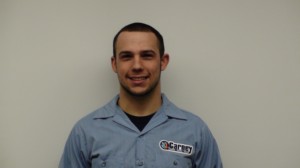There are so many different types and styles of air conditioners on the market these days, it can be difficult to figure out what features are worth paying attention to when it comes time to buy one for yourself.
Of course, the most important thing to do is make sure you get an air conditioner that’s appropriately sized for the space you’re trying to cool. But what should you look for beyond that? Here are a few features you might like to have on the unit you purchase:
- Energy Efficiency – The more energy efficient your air conditioner is, the less your cooling costs will be. It’s as simple as that. So when you’re evaluating devices, remember that it’s worth paying a little bit more up front for a more energy efficient unit. It will save you money in the long run and you’ll be doing your part to help the environment.
- Dehumidification – Just about every air conditioner controls humidity to a certain extent in addition to cooling. But some do this better than others. There are also air conditioners with separate dehumidification settings for those days that are more humid than hot. Even when you need both cooling and dehumidification, it’s nice to have control of each of these independently.
- Timer – Being able to program your air conditioner to switch on and off at different times of day is more than just convenient; it will save you money. You don’t want to leave your air conditioner running all day when you’re not home, but it sure is nice to come home to the comfort of an air conditioned space. If your air conditioner has a timer, you can have both. Just set the unit to come on a half hour or so before you get home and you’ll enjoy cool, refreshing indoor comfort right when you get home without paying through the nose to keep your home cool when no one is there.
- Easy-to-Use Controls – As simple as this one seems, you might be surprised at how inconvenient the controls on some air conditioners can be. So when you’re evaluating your options, make sure you research how easy each unit is to operate. This can definitely save you from plenty of frustration in the long run.
Air conditioners come in many different shapes and sizes. To make sure your decision works best in your home, do your research well in advance. When the summer heat kicks in, you’ll be glad you did.


